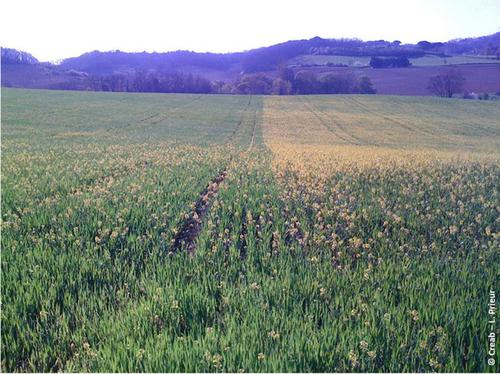Agronomy for Sustainable Development ( IF 7.3 ) Pub Date : 2022-06-01 , DOI: 10.1007/s13593-021-00749-1 Inès Mahé, Bruno Chauvel, Nathalie Colbach, Stéphane Cordeau, Aurélie Gfeller, Antje Reiss, Delphine Moreau

|
It is now essential to reduce the negative impacts of weed management and especially herbicide use. Weed-suppressive crop species/varieties hold promise for integrated and sustainable weed regulation. Competition for resources and allelopathy are the two main underlying mechanisms. Unlike competition, which is well studied and established, allelopathy by living crops remains a contentious mechanism. A major difficulty to demonstrate the effects of allelopathy in the field is to dissociate them from those of competition. Here, we systematically and quantitatively review the literature, searching for field-based evidence of the role of allelopathy (by root exudation of living crops) in weed regulation, independently of competition, focusing on studies comparing different varieties of a given crop species. Our critical literature analysis also aims to identify weaknesses and strengths in methodology, providing insights on optimal experimental designs and avenues for future research. Our main conclusions are: (1) in most articles, the role of crop competition is disregarded or not exhaustively studied. Consequently, contrary to authors’ conclusions, it cannot be determined whether weed regulation is due to allelopathy and/or to competition. (2) Few articles provided convincing evidence of the presence/absence of allelopathy in the field. (3) To further investigate allelopathy in the field we recommend to (i) finely characterize crop competition by measuring traits in the field, (ii) assess crop allelopathic potential with complementary experiments in controlled conditions or by quantifying allelochemicals in the field, and (iii) quantify the contribution of each studied trait/mechanism in explaining weed regulation in the field with multiple regression models. In conclusion, the consistent use of the suggested guidelines, as well as alternative approaches (e.g., creation of varieties with deactivated allelopathic functions, development of process-based simulation models), may provide a basis for quantifying the role of allelopathy in the field and, subsequently, for designing weed management strategies promoting weed biological regulation.
中文翻译:

破译杂草调控中作物化感作用的田间证据。回顾
现在必须减少杂草管理的负面影响,尤其是除草剂的使用。杂草抑制作物物种/品种有望实现综合和可持续的杂草监管。资源竞争和化感作用是两个主要的潜在机制。与经过充分研究和确立的竞争不同,活作物的化感作用仍然是一个有争议的机制。证明化感作用在该领域中的作用的一个主要困难是将它们从竞争中分离出来。在这里,我们系统和定量地回顾文献,寻找化感作用(通过活作物的根系分泌物)在杂草调节中的作用的实地证据,独立于竞争,重点是比较给定作物物种的不同品种的研究。我们的批判性文献分析还旨在确定方法论的弱点和优势,为最佳实验设计和未来研究途径提供见解。我们的主要结论是:(1)在大多数文章中,作物竞争的作用被忽视或没有详尽研究。因此,与作者的结论相反,不能确定杂草调节是否是由于化感作用和/或竞争。(2) 很少有文章提供令人信服的证据证明该领域存在/不存在化感作用。(3) 为了进一步研究田间化感作用,我们建议 (i) 通过测量田间性状来精细表征作物竞争,(ii) 在受控条件下通过补充实验或通过量化田间化感化学物质来评估作物化感作用潜力,(iii) 使用多元回归模型量化每个研究的性状/机制在解释田间杂草调控方面的贡献。总之,建议指南的一致使用以及替代方法(例如,创建具有去激活化感作用功能的品种,开发基于过程的模拟模型)可以为量化化感作用在该领域的作用提供基础,并,随后,用于设计促进杂草生物调节的杂草管理策略。

























 京公网安备 11010802027423号
京公网安备 11010802027423号